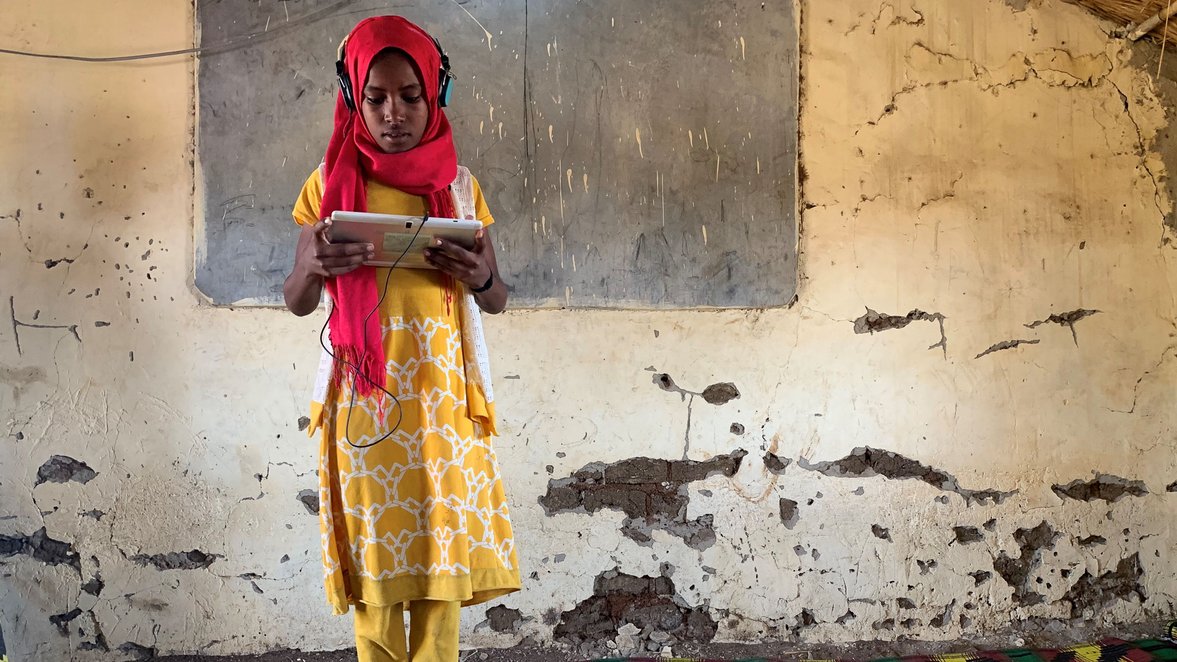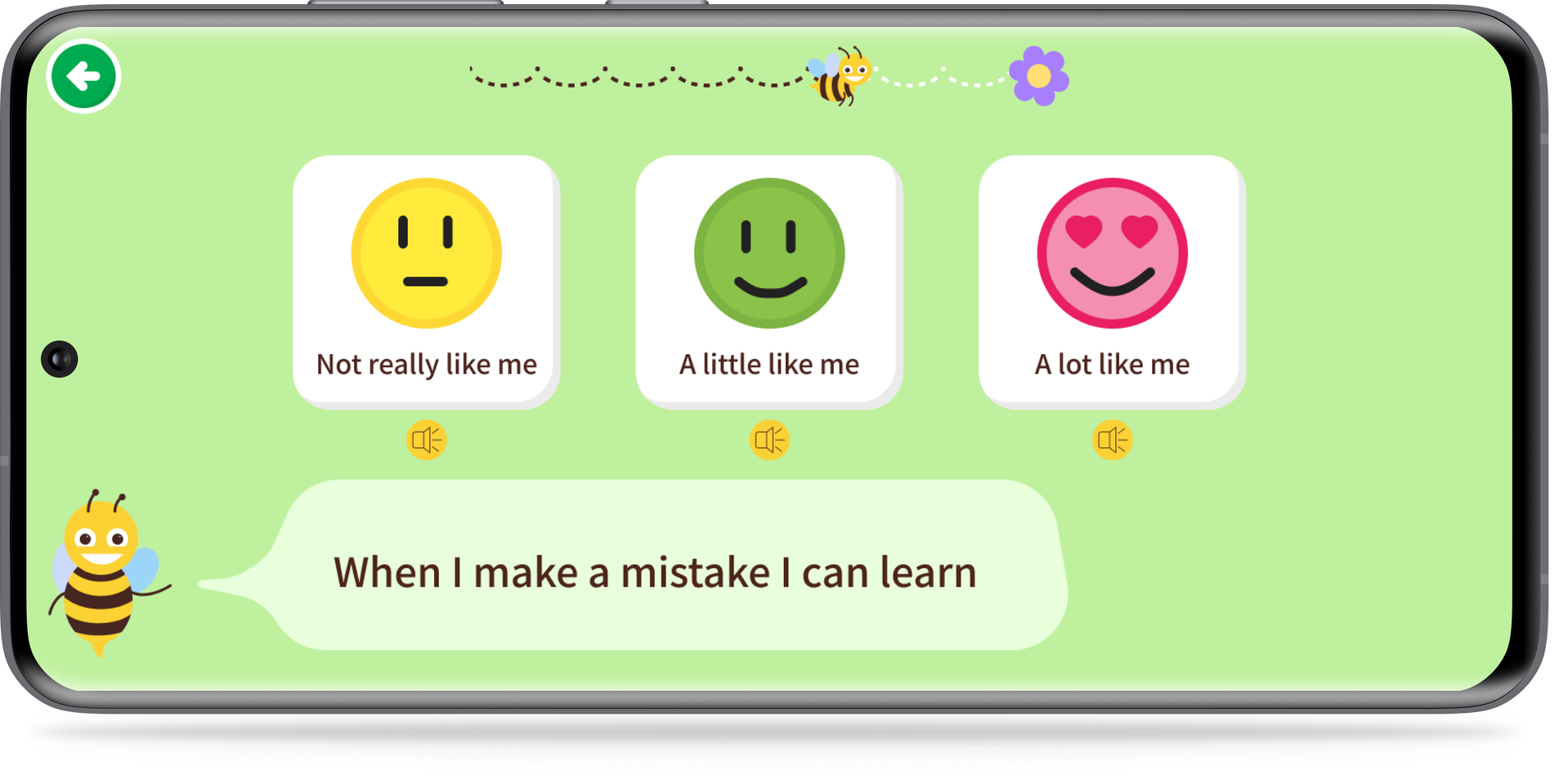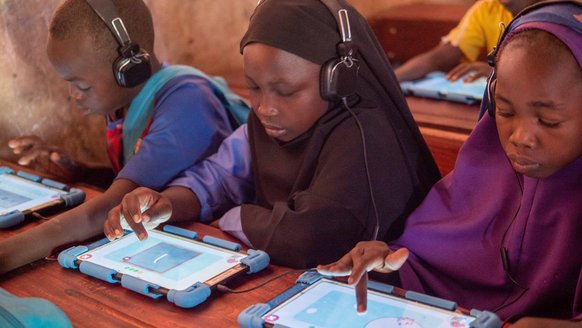Gobee Learning Agenda: Our Top Six Learnings From Developing an EdTech Tool for Emergency Settings
April 4, 2024

1. Hone your specific goals
Anyone who works in the Education in Emergencies (EiE) sector knows one thing: with so many competing needs, it’s easy to fall into the trap of "scope creep". We learned through experience that establishing then rigorously guarding your focus is key. Tech designed for a specific group, at a specific time, for a specific objective is a far more effective and smarter use of limited resources.
How do you ensure you’ve chosen the right focus? Conducting a needs assessment of a clear target group is a good starting point. Building a global-level one-size-fits-all solution simply doesn’t work as it ignores the specific needs within different contexts (e.g. national curricula, technical-practical circumstances). Instead, build flexibility into your software to facilitate hands-on contextualization later down the line.
Delve into the development intricacies with Hussein Al-Amoudi, shedding light on the ambitions and challenges that shaped Gobee.
2. Prioritise localization and skills transfer
Developing a tool in a complex context like EiE requires a solid team of experts. The team needed people skilled in IT programming, UX design, data handling and quality assurance. We also sought out individuals with specific expertise in social and emotional learning within the humanitarian sector as well as change management.
Having team members from the countries where the tool would be used turned out to be vital. These local team members could talk directly with end-users, gathering their insights and ideas through focus-group discussions and facilitating a vibrant co-creation process. Working closely with local education authorities from the start ensures your project is aligned with what countries want for their education systems, making it more likely to be used widely.

Gobee in action
3. Embrace collaboration
As Gobee began to take shape, aimed at bridging learning gaps during the COVID-19 pandemic, we recognised the evolving landscape of digital educational tools. Rather than positioning ourselves as competitors in this crowded field, we embraced collaboration as a strategic approach. Engaging with peers in the EiE sector, we explored potential synergies, contemplating how we might combine our efforts or complement each other’s work. We decided to share Gobee developments on an open-source platform to supplement existing and more advanced solutions.
This experience left us with two key lessons:
- Actively seek out existing solutions. This approach not only conserves resources but also enhances the effectiveness and reach of our tools by preventing overlap.
- Maintain an ongoing awareness of the market through regular competitor analysis ensuring our contributions remain unique and relevant. This mindset of cooperation over competition has guided our journey, and it makes more sense in a context of shrinking resources.
4. Embed your tool into the existing ecosystem
Creating an effective EdTech solution goes beyond just developing the software. It requires the set-up of a comprehensive ecosystem to reach the end-users. Technology, devices, power, internet and systems for managing data and security - all these are crucial and need to fit smoothly into existing educational set-ups, avoiding unnecessary complexity.
Our advice: Don’t start designing without a deep knowledge of the educational landscape and a robust plan for how to integrate them smoothly within existing practices. If existing infrastructure falls short, assess your capability to improve or establish the required support systems. If your capability is low, question the viability of your EdTech solution.
Glean insights on the power of integration from Lindsay Brown's perspective.
5. Open-source as a commitment, not a shortcut
Publishing our codes on an open-source platform demonstrated our commitment to collective progress in education during crises.
However, going open-source revealed significant challenges. A freely available tool like Gobee demands a committed community for maintenance, updates and user support. It’s more than just sharing code; it’s about building a supportive network.
In EiE, the majority of open-source software is managed by a long-term champion who operates a mixed business model of free and paid services in which donor subsidies continue to play a pivotal role.
Learn more about open-source software in resource constrained settings with Ghislaine Tegha.
6. Challenge assumptions with evidence
“If we build a good tool, they will come”…But will they? One of the objectives of the Gobee Learning Agenda was to unpack, question and address the assumptions being made around the tool - in terms of market, demand, funding etc. This meant constantly seeking out facts and data to make sure our decisions were sound.
This approach of testing everything against real-world evidence became our north-star. In the field of EiE, where situations can change rapidly and needs are complex, it’s important you revisit your assumptions regularly too. Conduct continuous context analysis to ensure they still ring true.
Reflect on the journey of assumption to evidence with Jigsaw's exploration of market needs.
Access the open-source codes
With Gobee’s source codes now out in the open and available on GitHub, we invite the global community to join us in this ongoing dialogue of innovation and impact.
The prototype consists of a gamified platform for students; including growth mindset and self-efficacy surveys, a teacher dashboard for formative assessment purposes and an assessment builder - all in draft format.
The Gobee journey is far from complete. Following a pause in its development due to multiple sticking points referenced in this article, we took the decision to let the tool benefit the sector in a different way.
Our shared story, enriched by the interviews with the project’s stalwarts, offers a roadmap for future endeavours in EiE.
For more information, please contact Kahina Boulegroun at kahina.boulegroun@warchild.net

